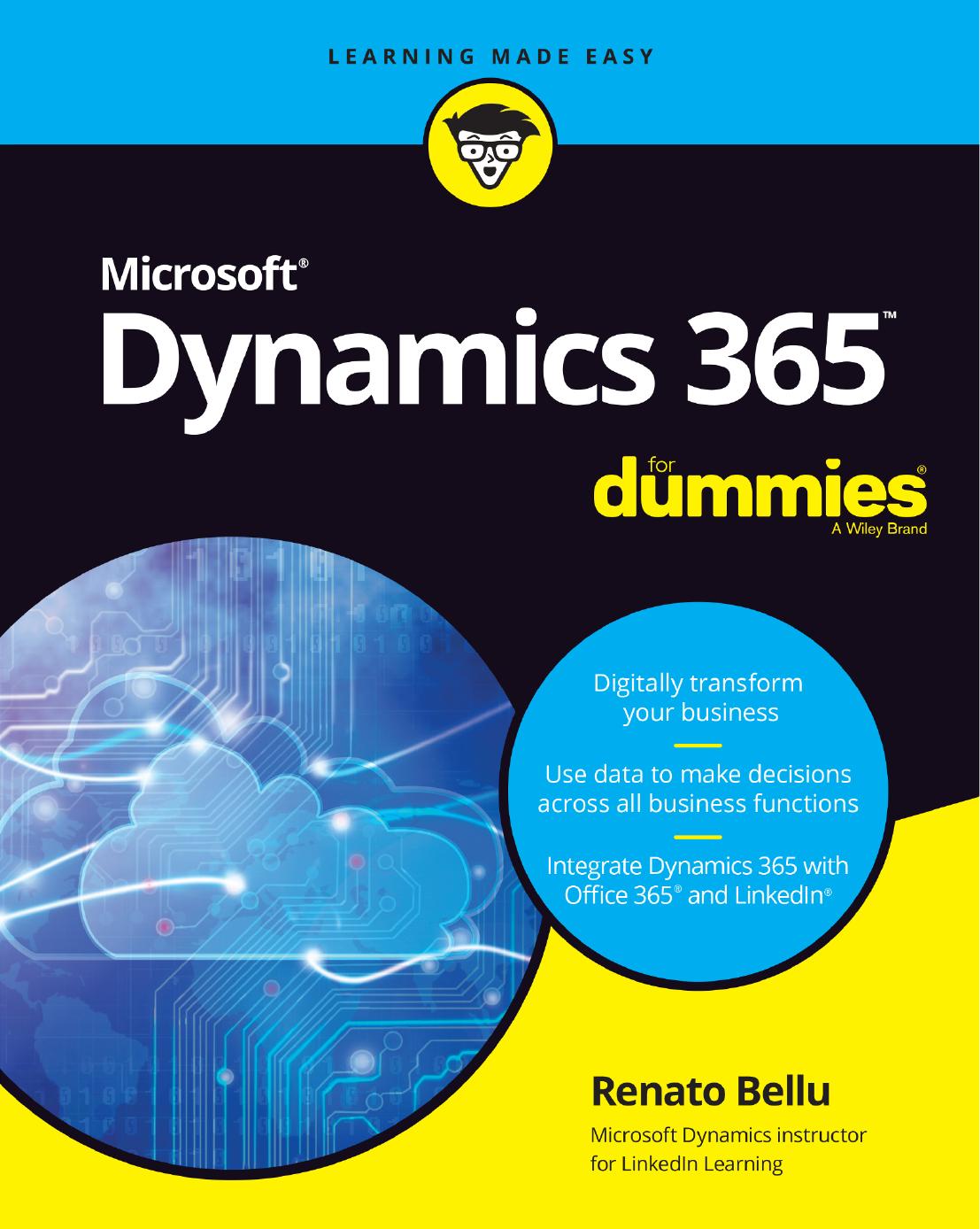Microsoft Dynamics 365 For Dummies by Renato Bellu

Author:Renato Bellu
Language: eng
Format: epub, pdf
ISBN: 9781119508892
Publisher: Wiley
Published: 2018-10-16T00:00:00+00:00
From humble beginnings, in Denmark in 1985, the seed of what is now Microsoft Business Central was sown. A Danish company called PC&C (short for Personal Computing & Consulting) released its first accounting software. Branded as PCPlus, it had only basic accounting features and could be used by only one user at a time. The PC revolution was under way, and literally hundreds of little accounting applications sprung up everywhere. PCPlus was eventually improved and rebranded as Navision, which was a client/server application that could be used by more than one person at the same time. (Imagine that.) From Denmark, Navision spread to Germany, England, and beyond, becoming a popular product throughout most of Europe by the time it was finally released for Windows 95, and thereby gained even more traction. The success of Navision has largely been attributed to its ease of extension and tailoring for individual clients due to its built-in, user-friendly customization tools. Another key selling point was its robust feature set, which included manufacturing capabilities.
By the time Microsoft acquired Navision in July of 2002, the company was a leader in off-the-shelf accounting software for the SMB (small-to-midsize business) sector in Europe. Microsoft had previously acquired Great Plains together with Solomon, which were two of the leading SMB accounting software packages in the United States. Many people believe that Navision was acquired to gain a customer base in Europe to complement the large customer base in the United States. Navision was rebranded by Microsoft as Dynamics NAV, and has had continued success, steadily gaining more market share over the years.
Accounting software — or, as it’s commonly known, ERP (enterprise resource planning) software — is a vital mission-critical component of any organization’s information technology investment. But ERP is different from many other types of software: ERP tends to become entrenched in organizations because, once it is established, migrating to a different solution is often expensive, time-consuming, and fraught with peril. Therefore, ERP is considered an anchor application: Once it goes in, it tends to stay there for decades. Microsoft executives were eager to enter the ERP market through these ERP acquisitions, which included Navision, not only for the profits from selling ERP itself but also because ERP would act as an anchor to help ensure that customers remained on the Microsoft technology stack — the one that includes the Windows operating systems, the SQL Server database, the Office automation suite (Word, Excel, Outlook, and so on), and programming languages such as .NET Visual Basic and C#.
Fast-forward to today’s volatile cloud services revolution and you see that for Microsoft to keep its ERP anchors in place, a flexible, user-friendly, easily customizable ERP offering with light manufacturing capabilities that is right-sized for the SMB sector is a necessary piece of the puzzle. Enter Business Central, a cloud ERP for the SMB market. To complement its SMB offering, Microsoft has also migrated Dynamics AX to the Dynamics 365 cloud, branding that ERP package as Dynamics 365 for Finance and Operations; Finance and Operations (AX) is targeted toward larger, mid-market enterprise clients.
Download
Microsoft Dynamics 365 For Dummies by Renato Bellu.pdf
This site does not store any files on its server. We only index and link to content provided by other sites. Please contact the content providers to delete copyright contents if any and email us, we'll remove relevant links or contents immediately.
Sass and Compass in Action by Wynn Netherland Nathan Weizenbaum Chris Eppstein Brandon Mathis(7967)
Supercharging Productivity with Trello by Brittany Joiner(7324)
Mastering Tableau 2023 - Fourth Edition by Marleen Meier(7091)
Inkscape by Example by István Szép(6963)
Secrets of the JavaScript Ninja by John Resig Bear Bibeault(6736)
Visualize Complex Processes with Microsoft Visio by David J Parker & Šenaj Lelić(6644)
Build Stunning Real-time VFX with Unreal Engine 5 by Hrishikesh Andurlekar(5672)
Design Made Easy with Inkscape by Christopher Rogers(4995)
Customizing Microsoft Teams by Gopi Kondameda(4537)
Business Intelligence Career Master Plan by Eduardo Chavez & Danny Moncada(4435)
Extending Microsoft Power Apps with Power Apps Component Framework by Danish Naglekar(4149)
Salesforce Platform Enterprise Architecture - Fourth Edition by Andrew Fawcett(4012)
Linux Device Driver Development Cookbook by Rodolfo Giometti(4008)
Pandas Cookbook by Theodore Petrou(4001)
The Tableau Workshop by Sumit Gupta Sylvester Pinto Shweta Sankhe-Savale JC Gillet and Kenneth Michael Cherven(3815)
Exploring Microsoft Excel's Hidden Treasures by David Ringstrom(3289)
TCP IP by Todd Lammle(3117)
Applied Predictive Modeling by Max Kuhn & Kjell Johnson(3006)
Drawing Shortcuts: Developing Quick Drawing Skills Using Today's Technology by Leggitt Jim(2975)
